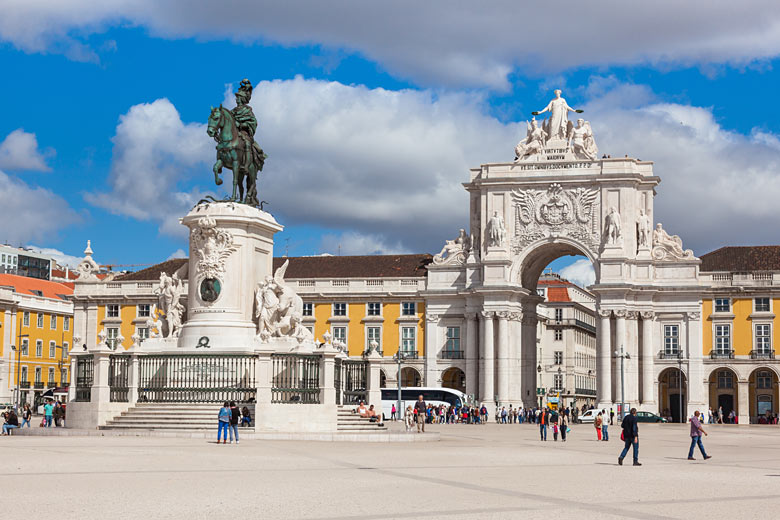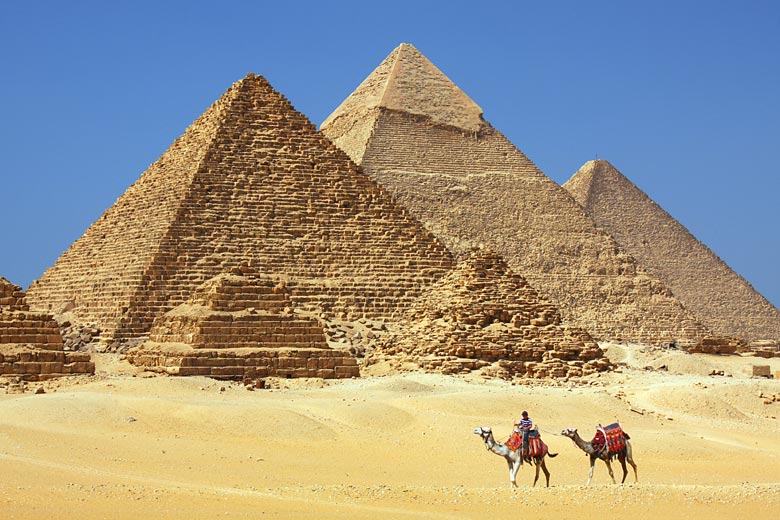Your guide to the sublime sights of Sicily, Italy
Beautiful Sicily, the largest of the Mediterranean islands, was colonised and invaded over the centuries by a plethora of peoples. Everyone from the Greeks, Phoenicians, Carthaginians and Romans to the Arabs, Normans, French and Spanish has left a mark on its culture, architecture, food and traditions.
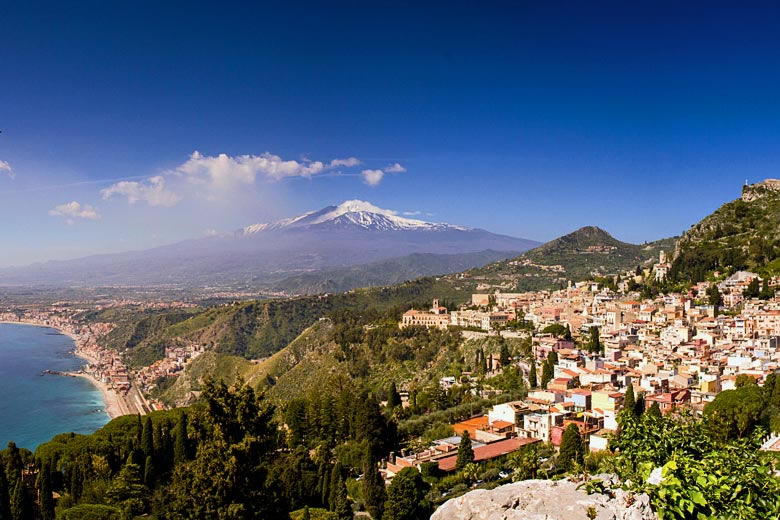
Temples, theatres, churches, UNESCO sites and Baroque palazzi are scattered around the island, while the Sicilian coastline offers some of Italy's most spectacular beaches with crystal clear waters and rugged landscapes.
The food is also remarkably different from the mainland - it has Greek, Spanish and Arab influences, and is heavily based on fish and seafood. The island's temperate climate means oranges and lemons grow abundantly, while palm trees line the coast.
Getting to Sicily: consider an escorted tour with the likes of Cosmos and Titan Travel to compare offers and make the most of your time on this glorious Italian island.
Taormina
Perched on a hillside, beautiful Taormina overlooks the Mediterranean Sea and snow-capped Mount Etna. Its compact centre comprises the traffic-free main street of Via Umberto, lined with 15th to 19th-century houses that break up onto pretty squares.
Founded by the Greeks in the third century BCE, the outstanding remains of the Greek Theatre boast jaw-dropping views of the sea and Mount Etna, often seen spewing lava.
Refuel at Da Cristina on Vico Sacramento for an arancino, a typical Sicilian snack of stuffed rice balls coated with breadcrumbs, traditionally filled with ragù, mozzarella, and peas
Alternatively, head to Bam Bar on Via Giovanni di Giovanni for a refreshing granita, a sweet frozen dessert similar to sorbet that is traditionally served with a brioche.
Mount Etna
One of the world's largest active volcanoes, Mount Etna's graceful slopes attract trekkers year-round. Seeing Mount Etna erupt is not uncommon - it is a Strombolian volcano, characterised by continual mild eruptions that send rock and ash shooting in the air.
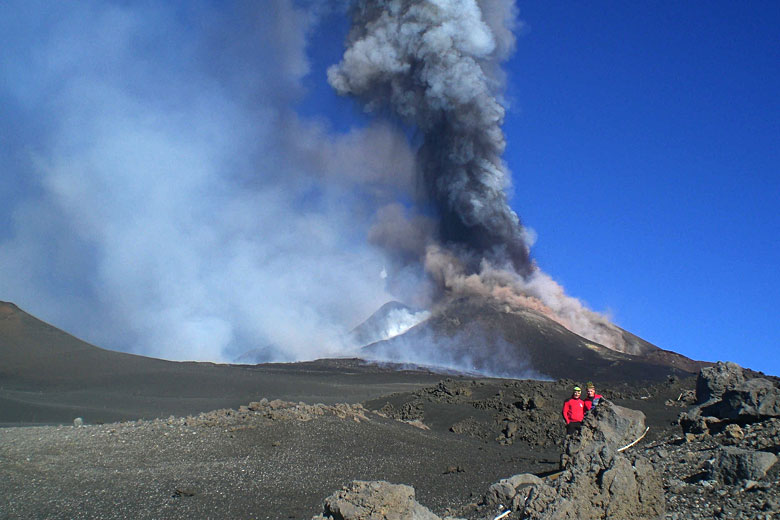
A number of trails zigzag the volcano, although they can at times be challenging for experienced trekkers too. It's best to have a guide or head on an organised tour.
Etna People organises a range of tours, including sunset and full day tours that stop off at vineyards and restaurants serving typical Sicilian dishes.
Siracusa
Home to some of the most magnificent Greek archaeological remains anywhere, Siracusa was the most important city in the western world under Greek rule.
The charming old town on the island of Ortygia, a pretty maze of cobbled streets with Greek, Roman, medieval and Baroque buildings, is connected to the new town by two bridges. Built in the 6th century BCE, the Temple of Apollo is the island's most ancient Doric temple.
The city's Museo Archeologico displays an impressive collection dating back to the early Greek colonies, while the Archaeological Park is home to the beautiful Teatro Greco that looks down onto the sea.
In the summer months, Greek plays are held here; sitting in the open-air and watching a performance unfold in one of the world's most ancient amphitheatres is an experience to behold.
Valley of the Temples, Agrigento
On Sicily's southern coast lies the Valley of the Temples, a series of Doric temples dating back to the 5th century BCE that line a ridge facing the sea.
The area is divided into two zones: the eastern zone, which houses the more impressive remains, and the western zone, home to the gardens of Kolymbetra.
The Tempio di Ercole is the oldest, begun in the 6th century BCE, with nine of its 38 columns re-erected (the rest lie scattered on the ground).
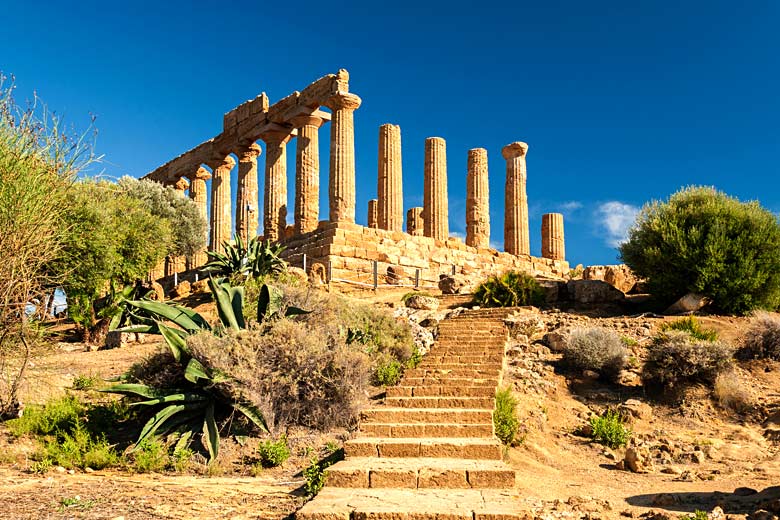
The beautifully preserved Tempio della Concordia dates to around 430 BCE, and offers pretty sea views. The western zone houses the Tempio di Giove, the largest Doric temple ever known, although it was never completed.
It's worth taking the time to stroll around the pretty Kolymbetra Gardens, dotted with citrus trees, almond and olive groves that are located between tufa cliffs. Nearby is the Museo Nazionale Archeologico displaying finds from the area.
Want to know when to go for the best weather? Find out about the weather in Sicily, and see when we think is the finest time to visit for lashings of sunshine.
Val di Noto
The southern part of the island is sprinkled with towns that were rebuilt after the destructive 1693 earthquake, each beautifully reflecting the late Baroque architecture of the 17th century.
During the mid-19th century Noto became provincial capital and is today one of the island's main attractions. Its centre is home to some of Sicily's finest buildings, including the Church of San Francesco and the wonderfully proportioned Piazza Municipio.
One of the most powerful cities in the 14th century, pretty little Modica has a spectacular Baroque cathedral and is renowned for its grainy and aromatic chocolate, which traces its origins to the Aztecs.
The Spaniards introduced the chocolate-making technique from Mexico, which remains unchanged to this day - vanilla and cinnamon are traditional flavours.
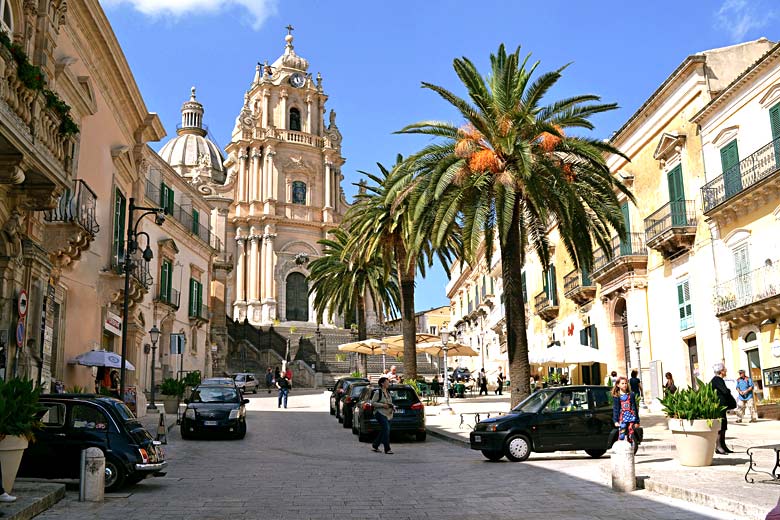
Split in two by the 17th-century earthquake, Ragusa has two identities: Ragusa Ibla was flattened and rebuilt in Baroque style, while Ragusa Superiore is home to modern buildings and grid-patterned streets.
Lined with gorgeous limestone palazzi, Ibla is mostly pedestrianised and largely dedicated to tourism.
Aeolian Islands
Off the northern coast of Sicily in the Tyrrhenian Sea, the Aeolian Islands are a volcanic archipelago comprising seven islands with bubbling volcanoes and lava beaches.
A pungent sulphurous odour greets travellers at Vulcano, the first port of call for boats. Hike up to the volcano's smouldering crater, or sit back and relax in the warm mud baths.
Lipari, the most populous of all the islands, is home to the Aeolian Archaeological Museum housing Neolithic pottery, Roman amphorae, plus Greek and Roman vases and statues.
To the northeast is Stromboli, whose bubbling volcano is in a constant state of activity. The island of Salina, renowned for its spectacular natural beauty, hosts a yearly caper festival in June, with entertainment, dancing, and caper-rich food aplenty.
Party animals can head to stylish Panarea, a gorgeous island with crystal-clear waters that is home to one of Italy's best nightclubs.
Beautiful Filicudi is characterised by steep slopes with stone terraces, while the cone-shaped island of Alicudi, the last of the chain, is a quiet spot where houses cling to the mountainside and mules carry heavy loads up and down steep tracks.
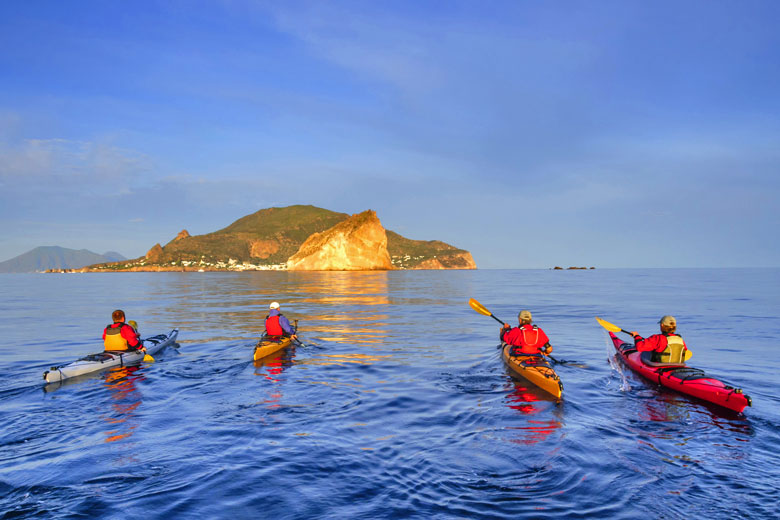
If you're feeling inspired to explore Sicily and its surrounding islands for yourself, check out our range of deals on escorted tours with the likes of Cosmos and Titan Travel today.
More about Sicily
- Overview
- Best time to visit
- Weather by month
- 5-day weather forecast
- Destinations
- Travel advice
- Deals & discounts
Sicily by month
Jan Feb Mar Apr May Jun Jul Aug Sep Oct Nov Dec
Explore holidays in the sun for less
- Beach holidays
- Family holidays
- City breaks
- Summer holidays
- Winter sun holidays
- Holiday offers
- Top travel brands
- Airlines & flights
- Discount hotels
- Airport parking deals
- TUI
- Jet2holidays
- easyJet holidays
- Love Holidays
- Black Friday sales
Airport parking
- Manchester Airport
- Stansted Airport
- Bristol Airport
- Luton Airport
- Birmingham Airport
- Edinburgh Airport
- Gatwick Airport
- Glasgow Airport
- Newcastle Airport
Airport lounges
- Manchester Airport
- Birmingham Airport
- Bristol Airport
- Edinburgh Airport
- Glasgow Airport
- Heathrow Airport
- Newcastle Airport
- Stansted Airport
- Gatwick Airport
Be inspired
Get your weekly fix of holiday inspiration from some of the world's best travel writers plus save on your next trip with the latest exclusive offers
We promise not to share your details











